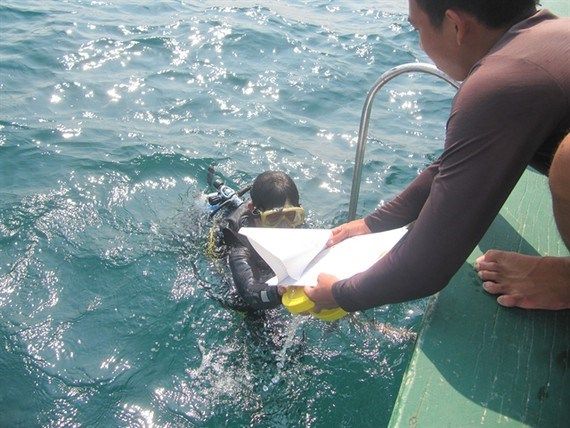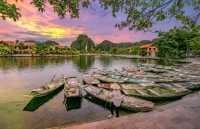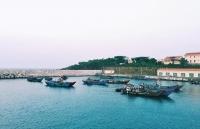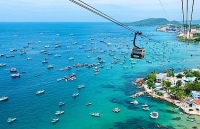
Ecosystem of Cham Islands recovers after COVID-19 pandemic
Latest
| TIN LIÊN QUAN | |
| One more imported case of COVID-19 brings national total to 325 | |
| Vietnam plans to arrange 18 flights to bring citizens home amid COVID-19 pandemic | |
 |
| A diver from the Cham Island Maritime Protected Area completes a check on coral reefs in waters off the islands. (Photo: VNA) |
Experts and staff from the Cham Island Maritime Protected Area (MPA) have made the statement after returning from a regular inspection on coral reefs and ecosystems at eight sites off the islands last week.
They said over-tourism resulted in the degradation of the ecosystem of the islands in recent years.
During the two-month social distancing order, the islands, a popular attraction welcoming 2,000 tourists each day, did not record any diving tours or boat trips.
“Coral reef coverage was well developed, but we have been collecting detailed information for a final report on coral reefs. However, many bottom feeders were recorded in coral reefs, especially holothurian and sea urchins,” said Nguyen Thi Thao, a worker at the MPA.
“The number of fish species living in the coral reefs was less than in previous checks.”
Vice director of the MPA, Nguyen Van Vu suggested that the islands reduce the number of visitors from a maximum of 3,000 to 1,000 each day to reduce pressure on the marine ecosystem.
He said the islands need a break for marine species and seafood resources to recover.
| Read more |
 Photo exhibition to feature Vietnam’s seas, islands Photo exhibition to feature Vietnam’s seas, islands |
The islands often receive 5 tonnes of waste each day, which mostly was in-organic waste from tourists, not including wastewater and freshwater consumption as well as seafood and forestry products.
According to the MPA, more than 2,700 groups of coral species had been planted at 10 sites off the islands, and an area of 2,000sq.m of coral reef was developed following a coral reef restoration project in 2015-17.
The reserve covers more than 33,000ha, including 1,500ha of tropical forests and 6,700ha of the sea, featuring a wide range of marine fauna and flora.
The islands are already overloaded, with a fleet of 152 boats including 145-speed boats traveling between Cua Dai Port in Hoi An and the Islands.
A report said the rapid increase of speed boats and fishing vessels was the main reason for 66 percent of seagrass off the islands being destroyed between 2009-18.
The islands, 20km off the coast of Hoi An, which was recognized as a World Biosphere Reserve in 2009, is one of few places in Vietnam successfully campaigning against plastic bags.
 | Hoi An ancient town's 20-year UNESCO World Heritage Site celebration to be held next month The central province of Quang Nam’s People’s Committee on August 21 organized a press conference announcing activities on the celebration of the 20th anniversary of recognition of Hoi ... |
 | Con Co Island sees tourism boom Con Co Island in the central province of Quang Tri is seeing a boom in tourist arrival since the first visitors set foot on the ... |
 | CNN Travel introduces best things to do in Vietnam’s Phu Quoc Island Phu Quoc island in the southern province of Kien Giang has emerged as a top destination in recent years, and CNN Travel has published a ... |





















